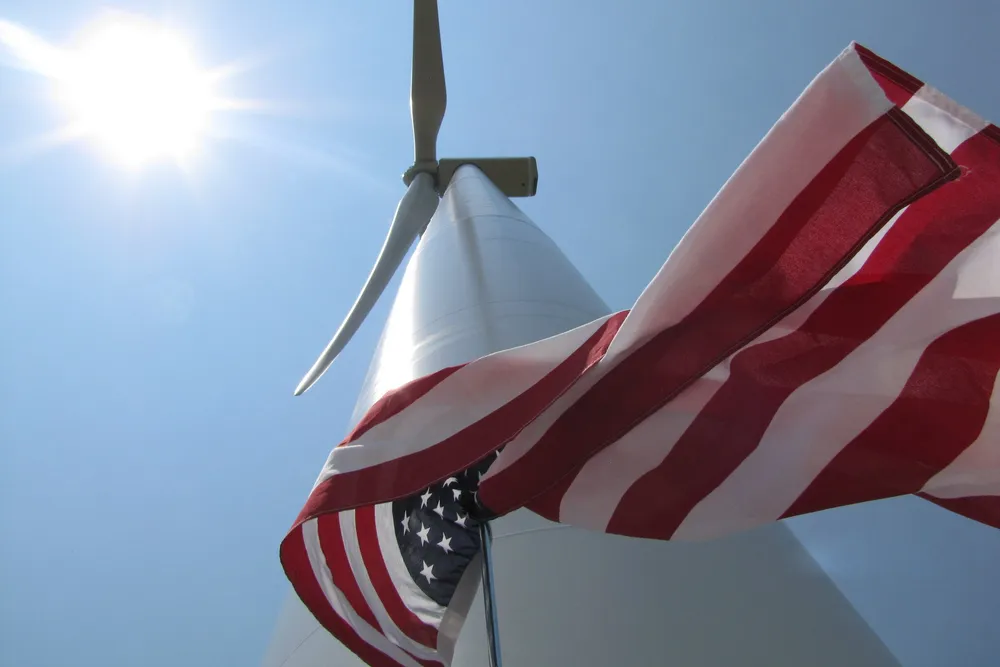Why US onshore wind is biggest clean energy loser in Trump's 'big beautiful bill'
Think tank Energy Innovation sees vanishing tax credits hitting the sector particularly hard compared to other renewables

US onshore wind is the biggest loser among renewable energy technologies from President Donald Trump’s sprawling domestic policy bill that cleared Congress today (Thursday), according to Energy Innovation, a non-partisan climate policy think tank.
It forecasts the industry will build around 200GW less wind capacity over the next decade in response to the One Big Beautiful Bill Act’s quick phase out of federal clean energy tax credits and addition of complex material sourcing requirements.
The bill also singles out wind for early termination in 2027 of the advanced manufacturing tax credit, which led market leaders GE Vernova and Vestas and their supply chains to increase capital investment in the past several years.
Both OEMs have invested in their US nacelle and blade factories and GE Vernova began domestic production of its 6MW “workhorse” turbine in New York State, which it has been exporting to Australia.
After Trump signs the bill into law, the technology-neutral production tax credit (PTC), the main federal industry subsidy, expires in one year.
Projects that begin construction before then can qualify – assuming they do not exceed certain new foreign content limits – and could enter commercial operation as late as 2030.
Under current law, the Inflation Reduction Act (IRA), the PTC would begin to step down in 2032 over four years. However, this is pegged to the US lowering power sector emissions to 25% of 2022 levels, an unlikely prospect, meaning the credit could extend into the 2040s.
Using an open-source workbook devised by National Renewable Energy Laboratory (NREL), Orvis said without the PTC, the levelised cost of energy (LCOE) for wind in 2027 will more than double for an onshore project that employs a “middle-of-the-road” turbine at class 6 wind speeds (8 meters/second).
Grid-scale solar (and batteries for storage), which utilises the investment tax credit (ITC) applied to a project’s capital cost versus energy output for wind, would see a lower LCOE increase when the subsidy expires in tandem with the PTC.
This, plus loss of the manufacturing credits, will place wind at a cost disadvantage versus its clean rivals.
Energy Innovation sees the bill curtailing 150GW of big solar development by 2035 and around 17GW of grid battery storage. While not insignificant, those numbers are much smaller in proportion to capacity that is planned versus wind.
In contrast, natural gas will add 19GW, a pittance compared to the country’s forecast electric power demand growth, given supply chain limitations for equipment that will persist through this decade.
Analysts expect a rush to accelerate wind development toward construction. That’s easier said than done.
“The question is, ‘What capacity do utilities and developers have to really pull forward those projects?’” said Orvis.
“With big balance sheets they could probably finance that off their own equity. You don’t necessarily have to go to a bank,” he said. “But any smaller developer that is undercapitalised, they are not really going to pull forward much of these projects so quickly.”
The bill’s placed-in-service deadline represents a key risk that will draw scrutiny from both investors and lenders.
“The one thing we know about the US grid right now is there is a huge backlog and timeline required to interconnect,” said Orvis, noting that commence construction is not their sole consideration. “Part of the picture is also when you are placed in service.”
Wind projects wait an average of almost six years in queues in the blustery central US, five and one-half in New York’s electricity market, and more than four in California’s.
Banks will bake in this uncertainty, increasing the cost of financing or deny it altogether. More expensive debt and tax equity, in turn, will dampen developers’ tolerance level for what constitutes an acceptable rate of return for wind.
“The financials are changing,” said Orvis.
(Copyright)